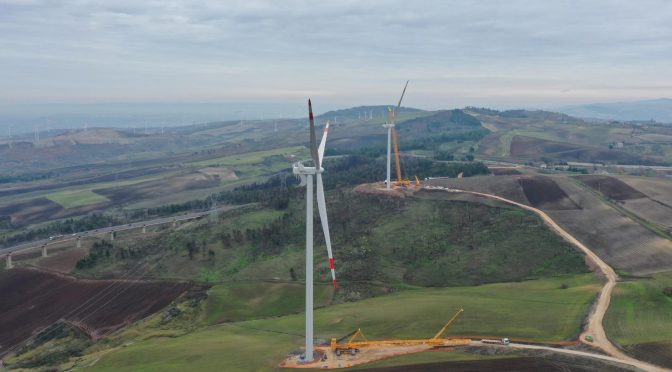The lush landscapes of Italy are witnessing a remarkable surge in renewable energy, heralding a major milestone in the nation’s clean energy endeavors. Reports indicate that in the first half of 2023, Italy added an impressive 2.5 gigawatts (GW) of new renewable capacity, bolstering the country’s clean energy production. According to the Monthly Electricity System Report, a critical update by Terna, a key player in Italy’s electricity grid management, domestic clean energy sources covered a commendable 44.3 percent of the nation’s electricity demand in June 2023.
The recent escalation in renewables marks a significant moment for Italy, as nearly half of the country’s electricity needs are now being met by locally produced clean energy. This growth can be attributed not only to favorable climatic and environmental conditions but also to the proactive installation of new renewable capacity within the country. The addition of 2.5 GW of renewable capacity represents a staggering 120 percent increase over the same period in 2022, signaling a promising shift towards a greener energy landscape.
Terna’s insightful report further reveals that electricity consumption in June 2023 reached 25.4 billion kilowatt-hours (kWh), a slight uptick compared to May 2023, but a notable 9.2 percent decline from the same period the previous year. Notably, the IMCEI index, which closely monitors the industrial consumption of approximately 1,000 ‘energy-intensive’ companies, reported a noteworthy decrease of 5.8 percent when compared to June 2022. While certain sectors experienced negative changes, the transportation equipment and food industries showed positive trends.
Italy’s green energy sector has played a pivotal role in offsetting the decline in overall electricity consumption, with domestically produced renewable sources contributing an impressive 50.5 percent of the total net domestic electricity production. This significant contribution allowed clean energy to fulfill a commendable 44.3 percent of the country’s electricity demand.
Unsurprisingly, hydropower continued to reign as the leading contributor to renewable production, accounting for 43.5 percent of the total green energy output. Photovoltaics followed closely behind, contributing 31.4 percent, while biomass chipped in with 12.1 percent. Wind power, though somewhat more modest in its contribution, provided a noteworthy 9.2 percent of the renewable energy production.
The noteworthy increase in solar capacity played a pivotal role in boosting renewable energy generation, witnessing a staggering surge of 2,322 megawatts (MW) in the first half of 2023. This tremendous growth was largely driven by incentives for residential photovoltaic installations. Among the regions, Lombardy saw the most substantial increase, amassing an impressive 382 MW, closely trailed by Veneto with 327 MW, and Emilia-Romagna with 202 MW.
Meanwhile, wind power experienced more subdued growth during the same period, amassing an increase of 272 MW in operating capacity. The regions of Puglia (+88 MW), Campania (+58 MW), and Sardinia (+35 MW) recorded the highest growth in wind energy capacity. Nevertheless, as a collective force, renewable energy sources contributed a commendable 42.4 percent to total net electricity generation from January 1 to June 30, 2023, showcasing a promising trajectory for the future.
Indeed, these positive trends in renewable energy are expected to gather further momentum with the proposed 2023 new PNIEC (National Integrated Plan for Energy and Climate). As a comprehensive and ambitious plan, it aims to accelerate the growth of renewable energy capacity and foster a sustainable and resilient energy landscape for Italy’s future.
With such remarkable strides in its transition towards cleaner and more sustainable energy sources, Italy firmly reaffirms its commitment to combat climate change and secure a greener future for generations to come.

Journalist covering politics, economics, commodities, and more.


